Boeing has an impressive track record
throughout the years of determining the new products and services it
will produce to
meet the needs of changing markets. The company has brought a string
of all-new commercial jet airplanes to market successfully because of
a value-based development philosophy that includes assessing enabling
technologies, scrutinizing markets, offering configuration choices and
listening to customers.
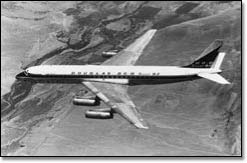 DC-8 DC-8
The DC-8 helped inaugurate reliable jet travel to the world in the late
1950s and became a major force in the long-range, high-capacity markets
of the early jet age. |
| |
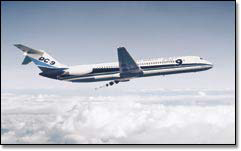 DC-9 DC-9
The DC-9 brought jet service to medium and small communities for the first
time in the 1960s, and together with its MD-80 and MD-90 derivatives,
the durable DC-9 became one of the most popular jetliners in commercial
aviation. |
| |
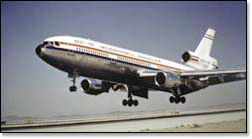 DC-10 DC-10
The DC-10 added a new category of aircraft to the world air transportation
system with its the three-engine, dual-aisle widebody design. |
| |
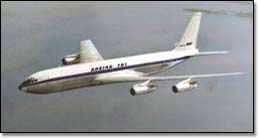 707 707
The 707 revolutionized air travel when it entered service in 1958. Whisking
airlines into the jet age, it combined the features and innovations needed
for commercial success. |
| |
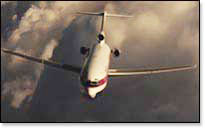 727 727
Of all the early Boeing jets, the 727 had the most distinctive appearance,
with its rakish T-shaped tail and its trio of rear-mounted engines.
A total of 1,832 727s were produced at the Boeing plant in Renton,
Wash., and they carried billions of passengers on everything from
short hops to cross-country flights. |
 |
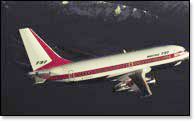 737 737
When developed, the 737 had direct competition with the Douglas DC-9 jetliner.
However, over the years the 737 grew to become the best-selling airplane
of all time. Incorporating advanced technologies, Boeing later designed
an all-new generation of 737s that are designed to fly higher, faster
and farther than earlier models. |
| |
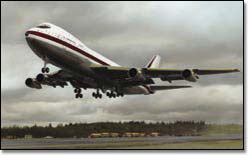 747 747
First
flown in 1969, the Boeing 747 marked a huge leap in aviation. Boeing
gambled its very existence on the original 747, a commercial
success that
was superseded by
the current 747-400
family in 1989. |
|
|
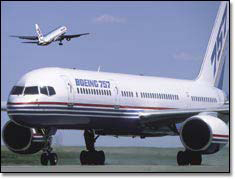 757
and 767 757
and 767
Boeing developed the 757 and 767 programs concurrently, launching
both models in a seven-month period -- the 767 in 1978 and the
757 in 1979. Although the Airbus A300 was in production, then-Boeing
President T. Wilson bet on two new twin-engine jets to
pioneer the next generation of commercial airplanes, boasting the
latest technology in the cockpits and common flight decks. The
simultaneous development of two
airplane models has not been
duplicated since. |
| |
 777 777
The Boeing 777 is the first jetliner to have been 100-percent digitally
designed using three-dimensional computer graphics. The airplane
is larger than all other twinjet or trijet airplanes and smaller
than
the 747. It brings the twin-engine economic advantage to medium-
and
long-range markets. |
| |
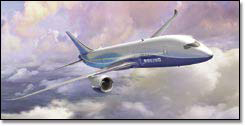 7E7 7E7
Boeing now is working on technology and production breakthroughs
that will enable the 7E7 to offer new opportunities for passengers
and airlines worldwide
with superior design,
efficiency and support. |
PHOTO CREDITS TK |
| |